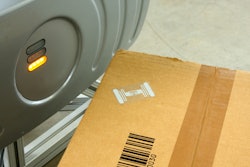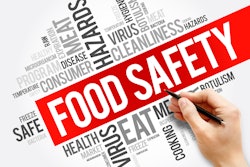
This year has been unprecedented for the food manufacturing industry. According to the U.S. Food and Drug Administration, there have been over 740 food and beverage recalls in 2024, doubling 2023’s total (313) and likely to triple 2022’s total (289) by year-end.
The risk of foodborne illnesses has always existed for businesses, institutions and families. Recently, the recalls have been tied to companies who have massive production operations, and several subsidiary brands that are all equally impacted. What recovery options do these food brands have to navigate recalls and slow down a crisis?
In 2020, the total consumer packaged goods (CPG) industry grew about 10.4%, outpacing the prior three-year annual growth rate of 1.8%, according to Boston Consulting Group (BCG) and Information Resources Inc.’s (IRI) annual CPG Growth Leaders List. This growth saw mid ($1 billion to $6 billion in annual sales), small ($100 million to $1 billion), extra-small (less than $1 billion), and private label CPG manufacturers gaining significant market share over larger manufacturers in 2020.
Major food companies typically deal with annual recalls for various reasons, which can be extremely costly. Approximately 600,000 small manufacturers in the United States represent 99% of all manufacturing enterprises and sometimes compete against companies in some markets. Although large manufacturers receive most of the media attention for food recalls, these 600,000 small food manufacturers also face large-scale recalls on a daily basis. In order to survive a crisis like a recall, the proper risk strategy and the right insurance protection can be critical if a food company wants to keep its operations intact for the long term.
How do food manufacturers typically manage their response to food recall crises when it happens? Who are the primary decision makers for food recalls?
Some food companies are better than others at managing recall responses. Not every situation is at the scale of Boar’s Head, where over 7 million pounds of “ready-to-eat” meat and poultry products have been recalled. Still, every food crisis that impacts public safety should be taken seriously.
The Food Safety Modernization Act (FSMA) is critical in maintaining food safety throughout the supply chain. It requires a food safety plan for all food manufacturers to follow. This includes the manager of the food plant and several team members from all areas of the company who would provide viewpoints on safety and risk mitigation. This team sets the example, enforcing procedures and ensuring the safety and security of products entering and leaving the facility.
What does a response strategy for a food recall look like?
A thorough response strategy for a successful recall plan is traditionally carried out by assigning specific roles, centralizing current contact information, and providing pre-written templates for communications.
Once a risk is identified that constitutes a recall, the manufacturer should determine if a recall would be classified as a Class I, Class II or Class III recall that weighs the severity of health consequences for consumers. Next, a confirmation on the product distribution list (consumer, retail, institutional, wholesale) is needed, which identifies those who received the recalled product.
A “market withdrawal” is one of the final “preliminary” components of the recall plan, which entails the company's removal strategy or correction of a distributed product. This piece of the process also includes a formal notice or press release that alerts the public (including regulators, retailers, consignees, other distributors, processors, and consumers) that a product presents a serious hazard to consumer health.
What are the major risks that insurance covers during recalls?
Manufacturing insurance like Accidental Product Contamination and Malicious Product Tampering coverage is now higher in demand with recent food recalls. These insurance policies typically cover the cost of getting the product back, the cost of damage to the product caused by contamination, loss of profits, rehabilitation expenses or extortion costs, and crisis consulting.
Many smaller manufacturing brands mistakenly believe their insurance needs are covered under a general liability policy when working closely with larger food companies. This isn’t the case.
Food recall insurance is not a one-size-fits-all solution for all food manufacturing hazards. However, as these situations become more frequent – it never hurts to consider Accidental Product Contamination and Malicious Product Tampering coverage in case it’s needed. It could be the difference between a business rebound and a fatal mistake that leads to a public safety crisis.


















